The V-280 Valor Will Replace the US Army’s Fleet of Black Hawk and Apache Helicopters
The US Army has awarded Bell and Lockheed Martin a contract to replace its aging fleet of Sikorsky UH-60 Black Hawks and Boeing AH-64 Apaches. Worth between $1.2 and $7 billion, the deal is the service’s largest helicopter procurement in 40 years. Here’s what we know about the Bell V-280 Valor, the tiltrotor aircraft set to be the Army’s next air utility vehicle.
A number of companies have contributed to the V-280 Valor
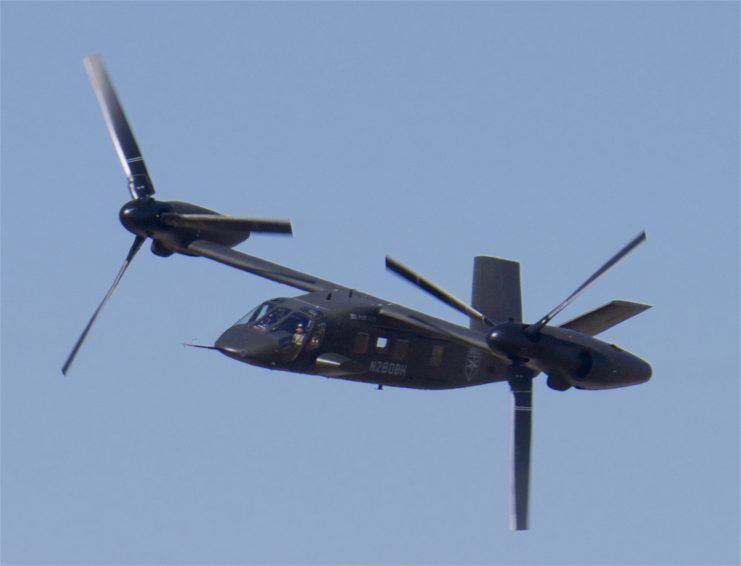
The Bell V-280 Valor is being developed as part of the US Army’s Future Vertical Lift (FVL) program. In June 2013, the tiltrotor was selected as part of the service’s Joint Multi-Role (JMR) Technology Demonstrator (TD) phase, meaning officials believed the design to be well-conceived and technically or scientifically sound. It also signaled that Bell Textron was on track to provide a vehicle that met the needs laid out by the Army.
A few months later, Bell revealed it would be partnering with Lockheed Martin to develop the V-280, with the latter providing sensors, integrated avionics and weapons. In addition to Lockheed, a number of other companies were announced as providing equipment for the rotorcraft.
GKN will provide the tail structure, while Eaton Corporation is responsible for the power generation and hydraulics systems. This will be paired with power distribution systems developed by Astronics Advanced Electronic Systems Corp. Israel Aerospace Industries (IAI) is contributing the V-280’s nacelle structures, while Moog Inc. will provide the flight control systems. TRU Simulation + Training has been tasked with producing a high-fidelity marketing simulator and desktop maintenance trainer.
While General Electric (GE) AeroSpace was initially tasked with providing the V-280’s engines, the decision was later made to go with a derivative of the Rolls-Royce T406/AE 1107C used by the Bell-Boeing V-22 Osprey.
Up against Boeing and Sikorsky
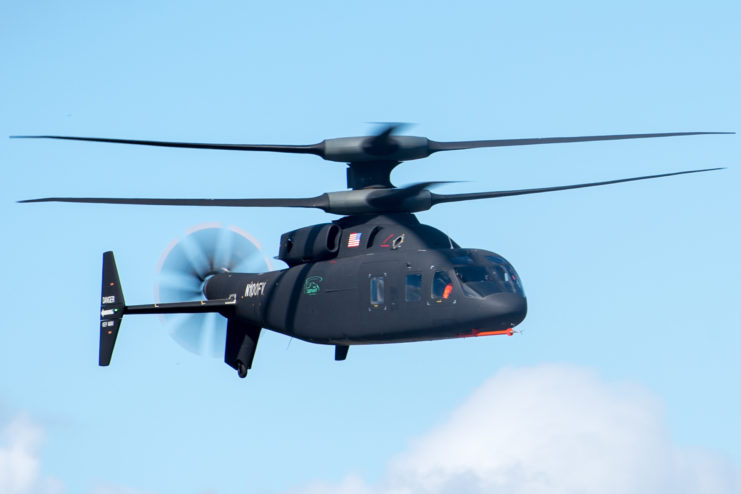
In October 2013, the Army awarded a technology investment agreement (TIA) to Bell to further develop the preliminary design for the V-280 Valor. The company was up against other competitors and awarded $6.5 million for this phase of the JMR program. Bell also invested an undisclosed amount of its own funds.
Just under a year later, the joint Bell-Lockheed design was selected to move forward, as was a rotorcraft developed by Boeing and Sikorsky, dubbed the SB-1 Defiant. Progress continued to be made on the V-280, with it undergoing a number of tests in 2017, including its first test flight that December.
In June 2021, Bell retired its flight demonstrator version of the tiltrotor, with it having flown over 214 hours. It had conducted 15 sorties under the operation of five Army pilots, who provided integral feedback. It wasn’t until December 2022 that the Army announced that the V-280 would be the Future Long-Range Assault Aircraft (FLRAA) design that would replace its UH-60 Black Hawk and AH-60 Apache fleets.
What we know about the V-280 Valor
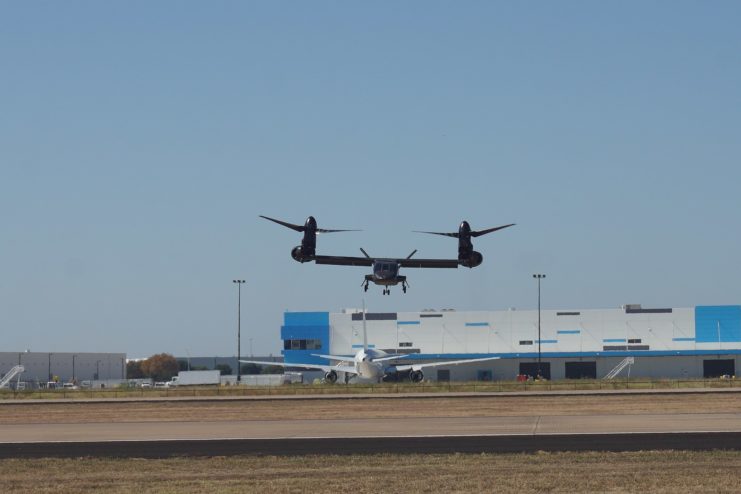
Given it’s still in the development and design phase, little is known about the V-280 Valor. However, Bell has shared a few tidbits, the most notable of which is the claim that the tiltrotor will handle much like a regular helicopter, in terms of its low-speed agility. It’s also the size of a medium-lift chopper, meaning it’ll cost around the same as an AH-64E or a Sikorsky MH-60M Seahawk.
The V-280 has a cruising speed of 280 knots (hence its name), with a top speed of 300 knots. The tiltrotor’s range is said to be 2,400 miles, with an effective combat range of between 580 and 920 miles. This is due to the fact that an emphasis has been placed on its weight, with the wing, tail and fuselage being built from light-weight composites.
Unlike similar rotorcraft, the V-280’s engines remain in place while the drive shaft and rotors tilt. Additionally, the drive shaft runs through the straight wing, allowing for a single engine (it has two) to power the tiltrotor, should a loss of engine occur. The tail structure and ruddervators designed by GKN will also allow for increased maneuverability and control.
On top of this, the V-280 will be manned by a crew of four, with the ability to carry up to 14 servicemen, and will be able to carry a M777A2 howitzer, thanks to its dual cargo hooks.
Development of a possible attack variant
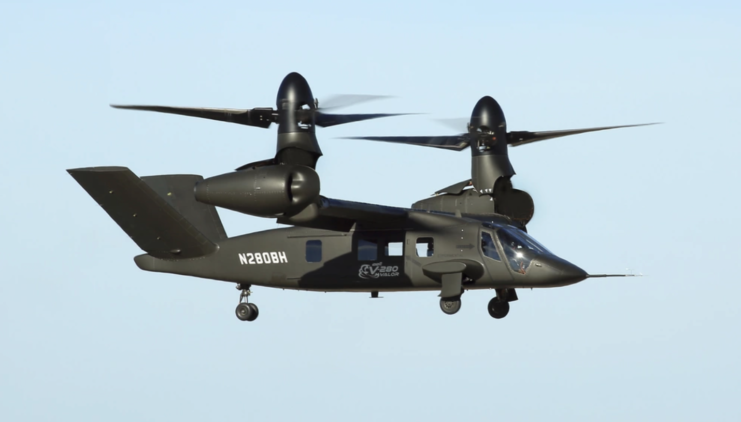
In addition to the utility variant of the V-280 Valor, Bell has revealed that it’s also working on an attack version of the tiltrotor, dubbed the AV-280. According to both it and Lockheed, the AV-280 will have the ability to launch rockets, small unmanned aerial vehicles (UAVs) and missiles without rotor interference, even in forward flight and cruise modes.
While the concept of having one rotorcraft to replace both utility and attack helicopters is appealing to some military branches, such as the US Marine Corps, the Army has stated that it’s not all that interested in the idea and would prefer to have individual systems for each mission type.
What’s next for the V-280 Valor?
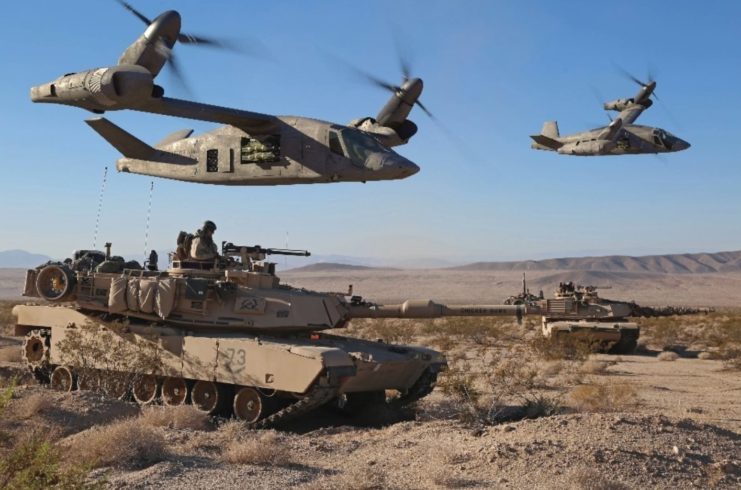
According to Bell and the Army, the next 19 months will see the design and development of a virtual prototype, with a cash infusion of $232 million from the military. No actual aircraft will be produced during this stage. If everything goes according to plan, the aim is to have the V-280 Valor enter service by the 2030 fiscal year.
More from us: These Helicopters First Took Flight During WW2
Once in service, the V-280 will operate in a number of capacities. Along with providing long-range assault solutions, it will likely also be deployed during humanitarian assistance missions. As well, pilots will also be able to provide visual assistance to ground troops in difficult environments, thanks to its onboard dashboard features.
The post The V-280 Valor Will Replace the US Army’s Fleet of Black Hawk and Apache Helicopters appeared first on warhistoryonline.
The V-280 Valor Will Replace the US Army’s Fleet of Black Hawk and Apache Helicopters
Philippines Truth
Post a Comment
0 Comments